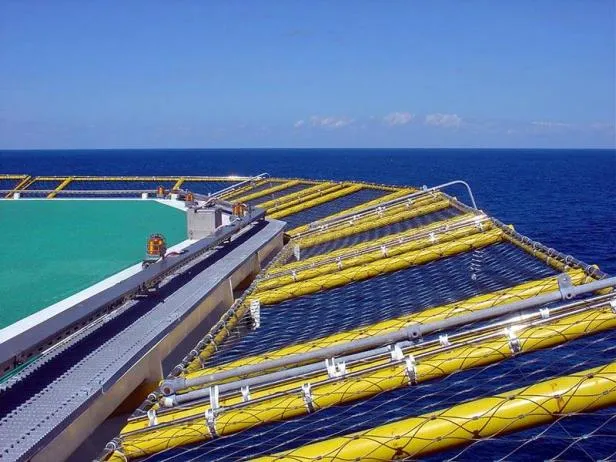- Industrial zone, South of Anping Town, Hengshui, Hebei, China.
- sales@hfpetromesh.com
- +86-18931809706
 Afrikaans
Afrikaans  Albanian
Albanian  Amharic
Amharic  Arabic
Arabic  Armenian
Armenian  Azerbaijani
Azerbaijani  Basque
Basque  Belarusian
Belarusian  Bengali
Bengali  Bosnian
Bosnian  Bulgarian
Bulgarian  Catalan
Catalan  Cebuano
Cebuano  Corsican
Corsican  Croatian
Croatian  Czech
Czech  Danish
Danish  Dutch
Dutch  English
English  Esperanto
Esperanto  Estonian
Estonian  Finnish
Finnish  French
French  Frisian
Frisian  Galician
Galician  Georgian
Georgian  German
German  Greek
Greek  Gujarati
Gujarati  Haitian Creole
Haitian Creole  hausa
hausa  hawaiian
hawaiian  Hebrew
Hebrew  Hindi
Hindi  Miao
Miao  Hungarian
Hungarian  Icelandic
Icelandic  igbo
igbo  Indonesian
Indonesian  irish
irish  Italian
Italian  Japanese
Japanese  Javanese
Javanese  Kannada
Kannada  kazakh
kazakh  Khmer
Khmer  Rwandese
Rwandese  Korean
Korean  Kurdish
Kurdish  Kyrgyz
Kyrgyz  Lao
Lao  Latin
Latin  Latvian
Latvian  Lithuanian
Lithuanian  Luxembourgish
Luxembourgish  Macedonian
Macedonian  Malgashi
Malgashi  Malay
Malay  Malayalam
Malayalam  Maltese
Maltese  Maori
Maori  Marathi
Marathi  Mongolian
Mongolian  Myanmar
Myanmar  Nepali
Nepali  Norwegian
Norwegian  Norwegian
Norwegian  Occitan
Occitan  Pashto
Pashto  Persian
Persian  Polish
Polish  Portuguese
Portuguese  Punjabi
Punjabi  Romanian
Romanian  Russian
Russian  Samoan
Samoan  Scottish Gaelic
Scottish Gaelic  Serbian
Serbian  Sesotho
Sesotho  Shona
Shona  Sindhi
Sindhi  Sinhala
Sinhala  Slovak
Slovak  Slovenian
Slovenian  Somali
Somali  Spanish
Spanish  Sundanese
Sundanese  Swahili
Swahili  Swedish
Swedish  Tagalog
Tagalog  Tajik
Tajik  Tamil
Tamil  Tatar
Tatar  Telugu
Telugu  Thai
Thai  Turkish
Turkish  Turkmen
Turkmen  Ukrainian
Ukrainian  Urdu
Urdu  Uighur
Uighur  Uzbek
Uzbek  Vietnamese
Vietnamese  Welsh
Welsh  Bantu
Bantu  Yiddish
Yiddish  Yoruba
Yoruba  Zulu
Zulu
- Afrikaans
- Albanian
- Amharic
- Arabic
- Armenian
- Azerbaijani
- Basque
- Belarusian
- Bengali
- Bosnian
- Bulgarian
- Catalan
- Cebuano
- Corsican
- Croatian
- Czech
- Danish
- Dutch
- English
- Esperanto
- Estonian
- Finnish
- French
- Frisian
- Galician
- Georgian
- German
- Greek
- Gujarati
- Haitian Creole
- hausa
- hawaiian
- Hebrew
- Hindi
- Miao
- Hungarian
- Icelandic
- igbo
- Indonesian
- irish
- Italian
- Japanese
- Javanese
- Kannada
- kazakh
- Khmer
- Rwandese
- Korean
- Kurdish
- Kyrgyz
- Lao
- Latin
- Latvian
- Lithuanian
- Luxembourgish
- Macedonian
- Malgashi
- Malay
- Malayalam
- Maltese
- Maori
- Marathi
- Mongolian
- Myanmar
- Nepali
- Norwegian
- Norwegian
- Occitan
- Pashto
- Persian
- Polish
- Portuguese
- Punjabi
- Romanian
- Russian
- Samoan
- Scottish Gaelic
- Serbian
- Sesotho
- Shona
- Sindhi
- Sinhala
- Slovak
- Slovenian
- Somali
- Spanish
- Sundanese
- Swahili
- Swedish
- Tagalog
- Tajik
- Tamil
- Tatar
- Telugu
- Thai
- Turkish
- Turkmen
- Ukrainian
- Urdu
- Uighur
- Uzbek
- Vietnamese
- Welsh
- Bantu
- Yiddish
- Yoruba
- Zulu
structural grating
Structural Grating An Overview of Its Design and Applications
Structural grating refers to a type of engineered platform that employs a network of intersecting bars or slats to create a durable and functional surface. Commonly made from materials such as fiberglass, steel, or aluminum, structural grating is utilized in various industries, including construction, manufacturing, and infrastructure projects. Its unique design offers numerous benefits, which will be explored in this article.
One of the primary advantages of structural grating is its ability to provide a high strength-to-weight ratio. This characteristic makes it an ideal choice for applications where weight is a concern, such as in overhead walkways, mezzanines, and stair treads. The open design of the grating allows for efficient drainage and flow of air and light, contributing to a safer environment by minimizing slip hazards in wet conditions.
In addition to its functional benefits, structural grating is also highly customizable. Manufacturers can create grating systems tailored to specific loads and environmental conditions. For example, fiberglass grating is known for its corrosion resistance, making it suitable for chemical processing plants and marine environments. Similarly, stainless steel grating can withstand high temperatures and is often used in food processing facilities.
structural grating

Another noteworthy aspect of structural grating is its ease of installation and maintenance. The modular nature of grating panels allows for quick assembly and disassembly, facilitating repairs or adjustments as needed. This feature is particularly advantageous in industries that require regular maintenance or updates to comply with safety standards.
Beyond industrial use, structural grating has also found applications in architectural designs. Architects increasingly incorporate grating into their projects to create visually appealing and functional spaces. Opened grating can add an interesting aesthetic element to buildings while providing necessary lighting and ventilation. For instance, it can be utilized as a decorative facade or as part of a sustainable green roof system, allowing for the growth of vegetation while ensuring structural integrity.
The environmental impact of structural grating cannot be overlooked either. Many manufacturers now focus on sustainable production processes and the use of recycled materials in their products. This commitment to eco-friendliness aligns with the growing trend of constructing greener buildings and infrastructures that minimize the carbon footprint.
In conclusion, structural grating is a versatile and essential component in various sectors, offering durability, customization, and safety. Its applications range from functional industrial purposes to innovative architectural designs that cater to modern environmental demands. As industries continue to evolve, the role of structural grating is likely to expand, further enhancing its relevance in building and construction practices. Whether for safety, aesthetics, or sustainability, structural grating remains a critical component worth considering in any structural design.
-
Welded Steel Bar Grating: The Strongest Choice for Industrial FlooringNewsMay.21,2025
-
Steel Grating for Sale: The Ultimate Anti-Slip SolutionNewsMay.21,2025
-
Steel Frame Shaker Screens: Unmatched Durability for Demanding OperationsNewsMay.21,2025
-
Shaker Screens: Your Ultimate Solution for Oil & Gas FiltrationNewsMay.21,2025
-
Press Locked Steel Grating: The Smarter Choice for Heavy-Duty FlooringNewsMay.21,2025
-
Helicopter Deck Safety Nets: Protect Your Crew and EquipmentNewsMay.21,2025